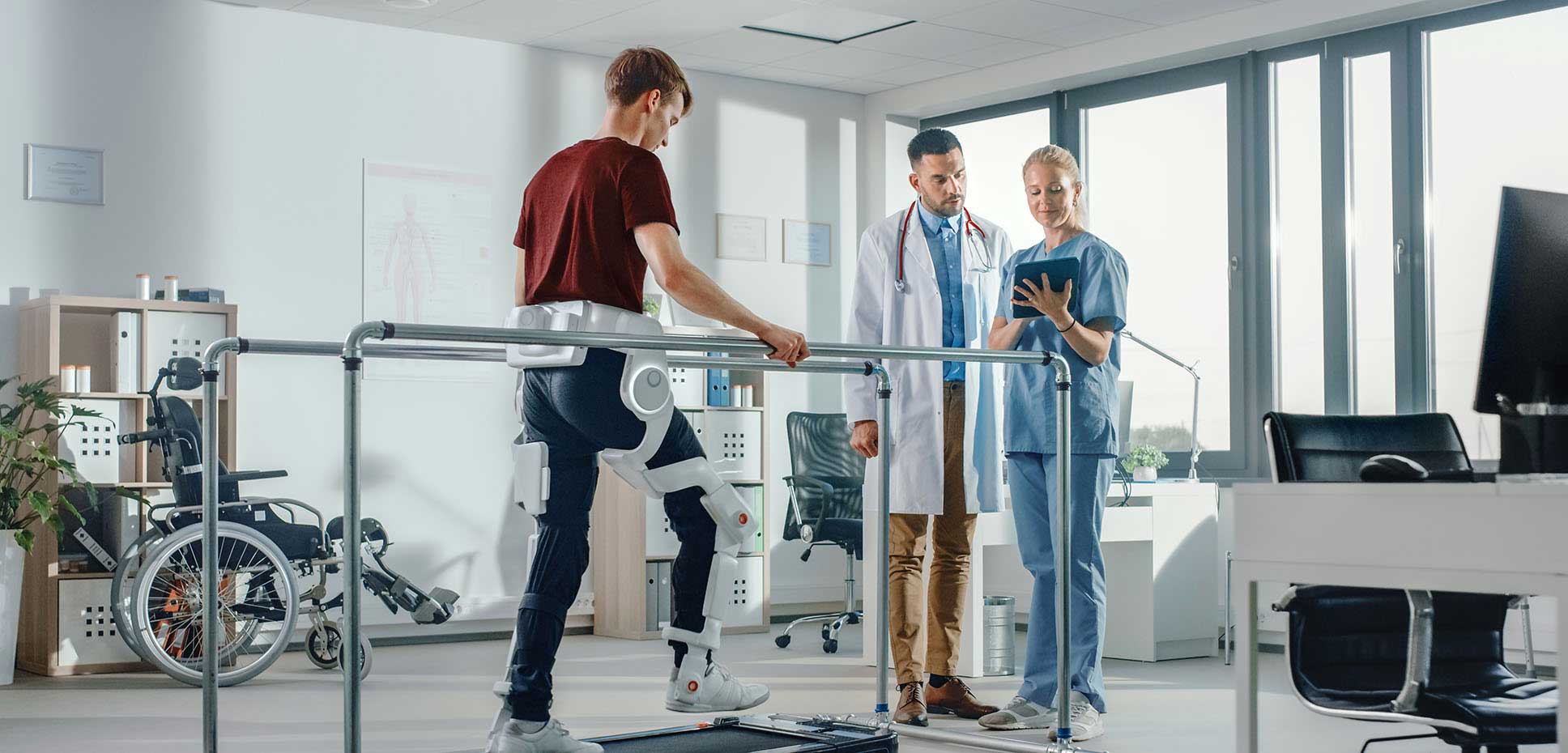How best to use and integrate Artificial Intelligence (AI) into claims environments is currently on the minds of Australian life insurers. No longer an ‘if’ but a ’when’, many insurers are currently considering how AI can best be leveraged to enhance the customer experience and increase efficiencies by automating routine tasks and processes. And this is likely to gather momentum in the coming years.
RGA anticipates AI could also have a transformative impact on the rehabilitation ecosystem. Life insurers may benefit from an awareness of its potential benefits and limitations, and the risks that could derail its successful implementation.
Understanding the essence of rehabilitation
Ask a rehabilitation professional what the essence of rehabilitation is, and the answer will probably be something like this: ‘a person-centred approach where we seek to understand an individual’s specific needs so we can intervene with the right services at the right time in order to support them back to their life roles following illness or injury.’
Fundamental to the rehabilitation model is the premise that every individual undergoing the process is different. While recovery from a medical condition usually follows a certain trajectory, it is often an individual’s underlying motivations and biopsychosocial ecosystem (i.e., their personal, work, family, social, and environmental circumstances) that are the true determinants of successful recovery and their ability to return to work. It is this person-centeredness – the human-to-human connection – that is at the heart of what rehabilitation professionals do.
Rehabilitation professionals therefore often struggle to fathom how a machine can outperform a human in what is a fundamentally human activity. However, we suggest the more useful question to ask is: how can AI enable a rehabilitation professional to spend more time directly working with customers and less time on necessary ancillary administrative tasks? For example:
- How can AI be leveraged to help more efficiently identify the customers who will best benefit from rehabilitation?
- Can AI support more effective implementation of rehabilitation interventions that achieve superior outcomes by more accurately tailoring the support to the needs of the individual, including their unique biopsychosocial circumstances?
AI’s demonstrated benefits in diagnostics, treatment, and recovery
AI has enhanced a myriad of capabilities in diagnostics, treatment, and recovery, such as:
Diagnostics
- AI has facilitated analysis of vast datasets, enabling identification of patterns that can yield more precise diagnoses and personalised treatment plans.1
- AI-powered imaging techniques have enhanced detection of anomalies and are providing valuable insights into various neurological, cardiovascular, and cancer related conditions.2
Therapeutic care and recovery
- AI algorithms are already powering robots and exoskeletons that are helping patients with physical, neurological, and spinal deficits regain their balance, coordination, and strength by predicting and adapting to their movements.
- Wearable devices equipped with AI-driven biometric sensors monitor vital signs, providing real-time health data to individuals and their allied health professionals. In addition, AI-equipped wireless motion sensor trackers are being used to analyse the quality of movements performed when undertaking rehabilitation exercises.3, 4
- Immersive AI-driven technologies such as virtual reality (VR), augmented reality (AR), and gamification (i.e., active video games) assist individuals, particularly those recovering from strokes, musculoskeletal conditions, and spinal injuries, in their strengthening and healing by providing gamified incentives for improvements.3, 4
Mental health
- AI-supported chatbots and virtual mental health assistants are providing on-demand therapeutic support.5
- Machine learning, predictive analytics, natural language processing, and sentiment analysis are used to detect subtle changes in how individuals interact verbally in order to identify the potential onset of certain mental health conditions and develop personalised treatment plans.6
- VR is showing promise as a tool to treat trauma- and anxiety-based mental health conditions.7
While not within the scope of this paper, it should be noted that ethical concerns have been raised with the use of AI in mental health care, given the increased risks that may arise with this vulnerable population.8
AI in vocational and occupational rehabilitation
Vocational and occupational rehabilitation service providers are also exploring ways to integrate AI into their service offerings and day-to-day practices.
The reliance on wearables and wireless sensors to track progress. and understand effort is now commonplace in physical and work conditioning programs. Machine learning and predictive analytics are also being used to refine and optimise performance and health metrics.
VR/AR is proving useful as well, giving individuals a way to practice real-life skills such as mimicking the performing of activities of daily living or the functions required of their occupational duties, or new job skill development and training.9
AI-driven assistive technologies that support disabled individuals in the workplace are also seeing exponential growth and are changing how work disability is viewed. Two examples are: Microsoft’s Seeing AI app, a smartphone app that verbally describes environments to individuals with a vision impairment; and Google’s Project Euphonia, which translates and interprets unclear speech (common with individuals recovering from stroke or neurological disorders).10
Also gathering momentum, although not yet widely adopted by occupational rehabilitation providers in Australia, is AI’s ability to support transitions into new careers and the obtaining of new employment. Careerbots (such as IBM’s Watson Career Coach) are providing job search guidance and real-time feedback on interview skills and job vacancies, allowing individuals to assess their work skills and interests and determine work for which they may be suited without the need for career counsellor assistance.10, 11
Generative AI solutions such as ChatGPT are also creating professional-looking resumes and cover letters, which can then be utilised (with some user input) for job applications. While still in the embryonic stage, AI is reinventing how career counselling is performed as well, allowing greater client autonomy as well as access to support at very little cost.
The transformative impact AI is having in vocational and occupational rehabilitation is unlikely to stop at individual and service provider levels. It may also have clear and significant potential to reshape and reimagine entire rehabilitation operations within the life insurance industry, which will give rehabilitation experts the time and space to do what they do best.
From analysing complex medical data from various sources to identifying cases deemed suitable for vocational rehabilitation, and even offering guidance on the most effective treatment and rehabilitation interventions to achieve optimal return-to-work (RTW) outcomes, AI has already proven that it can outperform humans both in time and accuracy and that it is easily scalable. Add to this AI’s ability to perform routine administrative tasks, and it is not difficult to see that opportunities for efficiencies will abound should rehabilitation teams within the life insurance industry embrace and work alongside AI technology to refine and renew their day-to-day operations, harnessing its power to enhance current practice.





